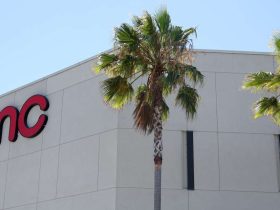Baby boomers: Love ‘em or hate ‘em, the juggernaut generation changes every aspect of life it steamrolls through. Now it’s doing the same to healthcare. By 2030, every baby boomer will be 65 or older. Many will live well into their 80s, given that a 65-year-old currently can expect to live 18 more years.
As boomers age, they’ll need more replacement body parts and therapies for cancers and other ailments. Age is one of the biggest risk factors for cardiovascular disease, cancer and other serious illnesses. The number of boomers with these health issues will be huge. The U.S. has 76 million boomers, and worldwide there will be 1 billion seniors by 2030, according to the Brookings Institute.
Biopharma buys
This feels like a good time to buy biopharma as a contrarian investment, particularly with the tailwind of boomer aging driving demand over the next 10-20 years.
Healthcare plays look particularly cheap right now because investors despise biopharma stocks. “Sector sentiment feels pretty close to an all-time low,” Baird biotech analyst Brian Skorney reports.
Investors are worried about three factors, says Morningstar analyst Karen Andersen: Inflation Reduction Act (IRA) policies giving the federal government more control over drug prices; patent losses, and aggressive Federal Trade Commission challenges to proposed mergers. She discounts these risks.
“The biopharma-related policies in the IRA are manageable, and that innovation will offset the patent losses,” Andersen says. “The market is underappreciating the significance of innovation in the biopharma industry.”
Here are three timely health care stocks that reflect this theme — two that company insiders favor and one from Morningstar Direct, which does solid stock research.
1. AstraZeneca (AZN)
This drug maker is particularly strong in therapies for ailments that affect the elderly — including cancer, cardiovascular disease and diabetes. AstraZeneca’s
AZN,
biggest business is cancer therapies. The company derives about 39% of its revenue from this area. It recently launched the cancer drugs Tagrisso, Imfinzi, Lynparza, and Calquence for lung cancer, breast cancer and lymphoma, respectively. “These drugs carry strong pricing power to support higher margin sales,” Morningstar analyst Damien Conover says.
AstraZeneca has a lot more products on the way, because it spends so much on research — well-above the industry average. AstraZeneca’s research emphasizes the development of therapies for cancer, heart failure, COPD, kidney disease and respiratory illness, all of which affect the elderly more.
Conover says AstraZeneca’s pipeline is one of the strongest in the drug group. It has more than 120 Phase II and Phase III trials in progress, including on several therapies with blockbuster potential. Conover adds that many of these drugs will command high prices, so margins will improve. He projects 8% annual sales growth over the next five years.
Another bullish factor: The company gets just 41% of its revenue from U.S. sales. This limits the potential impact of government price controls to some degree. Conover also assigns AstaZeneca a wide moat based on its patents and distribution network.
2. Zimmer Biomet (ZBH)
If you know anyone who has gotten a hip or knee replacement, the chances are good they are now walking with help from a Zimmer Biomet
ZBH,
product. The company makes orthopedic reconstructive products, mainly for knee and hip replacement. It also sells a suite of robotic products that help with surgery, such as the recently-introduced ROSA Robot.
In the most recent quarter, the company posted decent 6% sales growth and boosted guidance to 6.5%-7% sales growth this year, up from prior guidance of 5%-6%. The upper end of EPS guidance went to $7.57 from $7.50.
Nevertheless, the stock has fallen sharply to the low $100 range from around $145 last summer. What might turn the stock around? The company is bullish on sales growth from two new product lines — the ROSA Robot surgery robot, and Persona OsseoTi Keel Tibia, a new cementless tibia used in total knee replacement.
“It’s early innings, frankly, both for ROSA as well as cementless,” CEO Ivan Tornos said on the latest earnings call. The Persona OsseoTi Keel Tibia launch has been hit by supply issues which will be resolved early in the first quarter of 2024, he says.
And of course, rising boomer demand for new knees and hips will drive growth.
In the current sell off, a cluster of Zimmer Biomet insiders purchased about $700,000 worth of stock in the $112-$120 range. Cluster-buys are a positive signal in insider analysis. Morningstar has a five-star rating (out of five) on Zimmer, and it assigns the company a wide economic moat, mainly due to switching costs for surgeons. The learning curve to become proficient in a new set of instruments used in replacement surgery is steep.
3. STAAR Surgical (STAA)
This company sells implantable lenses used in normal vision correction and cataract surgery. The cataract correction market is growing because of the aging of the boomer population. Most people develop cataracts by the time they are in their 70s.
Despite the aging of the boomer generation, STAAR Surgical
STAA,
stock has been cut more than half to $39 from $80 back in February. The problem here is the company has an implantable lens technology that is not yet gaining traction in the U.S., despite its popularity in Asia.
It is called EVO ICL. The “ICL” in the name stands for implantable Collamer lens. Collamer is the name of the material the company uses. EVO ICL is a super slim lens implanted in the eye. Think of it as a permanent contact lens. The challenge is that EVO ICL competes laser-assisted in-situ keratomileusis (LASIK) surgery. Because it is less invasive and cheaper, LASIK is often the treatment of choice in the U.S.
This is one reason that STAAR Surgical has been guiding down on growth, which has hurt the stock. But the new guidance is not terrible. The company expects to post 20% sales growth this year. “We believe we will continue to be a high-growth company beyond 2023 in the 15% to 20% range,” CEO Tom Frinzi says.
EVO ICL is popular in other parts of the world, and Frinzi is optimistic that the U.S. will catch up. “We remain confident this market will achieve the growth levels we have seen in our other target markets.” Steps to help make this happen include new management, attempts to improve relations with eye surgeons, and better use of statistical analysis to identify and target high-volume customers.
The big insider buyer is a beneficial owner (10% owner) called Broadwood Partners. It has a good record here and it is buying in size, or around $7.9 million worth. A director also bought $97,000 worth. The buying happened in the $41 range and the stock is cheaper now.
Michael Brush is a columnist for MarketWatch. At the time of publication, he owned ZBH and STAA. Brush has suggested ZBH and STAA in his stock newsletter, Brush Up on Stocks. Follow him on X @mbrushstocks.
More: How to play the coming January bounce-back for 2023’s stock-market losers
Also read: Among the S&P 500, these 20 companies have made the best use of investors’ money
Read the full article here













Leave a Reply